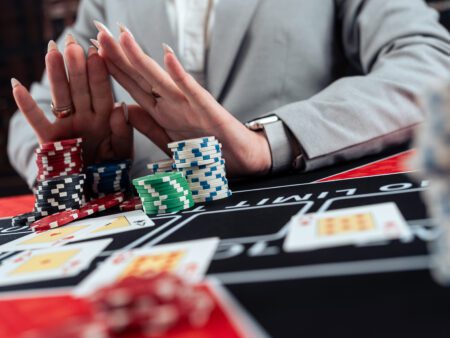Uncover the hidden mind games behind gambling. From thrill-seeking behaviors to cognitive biases, delve into the fascinating psychology of gambling.
Behind the Bet: Understanding the Psychology of Gambling
Greetings to all the game aficionados out there! Today, we’re veering off the beaten track of game reviews and strategies. Instead, we’ll delve into the intriguing world of the human mind and its role in gambling. Welcome to the psychology of gambling.
The Thrill of the Gamble
At its core, gambling is a form of entertainment, a thrilling activity that raises our dopamine levels and gives us a rush of excitement. The human brain is wired to enjoy these moments of heightened intensity and anticipation. The uncertain outcome of gambling creates suspense, which in turn releases adrenaline, adding to the thrill of the game.
Risk-Taking Behavior and Gambling
Risk-taking is an integral part of gambling. Why do we take risks in games of chance? The answer lies in our brain chemistry. When we take risks and succeed, our brain rewards us by releasing dopamine, a neurotransmitter associated with feelings of pleasure and satisfaction.
However, it’s essential to understand the difference between healthy risk-taking and problematic behavior. Gambling can be an enjoyable pastime when done in moderation, but it can become an issue when it leads to financial or emotional distress.
Cognitive Biases in Gambling
Cognitive biases play a significant role in gambling behaviors. These are systematic errors in thinking that affect the decisions and judgments that people make. Some of the most common cognitive biases in gambling include:
- The Gambler’s Fallacy: This is the belief that if a particular event has not occurred recently, it is due to happen soon. For instance, in a game of roulette, after a series of red outcomes, a player might believe that a black outcome is overdue.
- Illusion of Control: This is when players believe they can somehow influence the outcome of a purely chance-dependent game.
- Near-Miss Effect: This is when a near-win is perceived as a special kind of loss that is encouraging rather than discouraging, motivating the gambler to try again.
- Confirmation Bias: This is when gamblers pay more attention to information that supports their beliefs and overlook information that contradicts them.
Understanding these cognitive biases can help gamblers make more informed decisions and avoid falling into common psychological traps.
Problem Gambling and Psychology
Problem gambling, or gambling addiction, is a serious issue that affects numerous individuals and families worldwide. It is a behavioral addiction recognized by the World Health Organization.
The psychology behind problem gambling is complex. It’s often linked to the gambler’s belief system, self-esteem, and desire for social validation. Problem gamblers often chase losses, believing that they’re just one bet away from a big win.
If you or a loved one is struggling with problem gambling, it’s crucial to seek professional help. Many resources and organizations provide support for problem gamblers, including therapy and counseling services.
Conclusion
Understanding the psychology of gambling helps us become more informed, responsible players. It allows us to enjoy the thrill of the game while being aware of our actions and their potential implications.
Always remember, gambling is a form of entertainment. It’s not a way to make money or solve financial problems. When approached responsibly, it can be an enjoyable activity.
Keep coming back to our blog for more insightful articles about gambling, games, and much more. Remember, gamble responsibly and stay safe.
Happy gaming, everyone!










